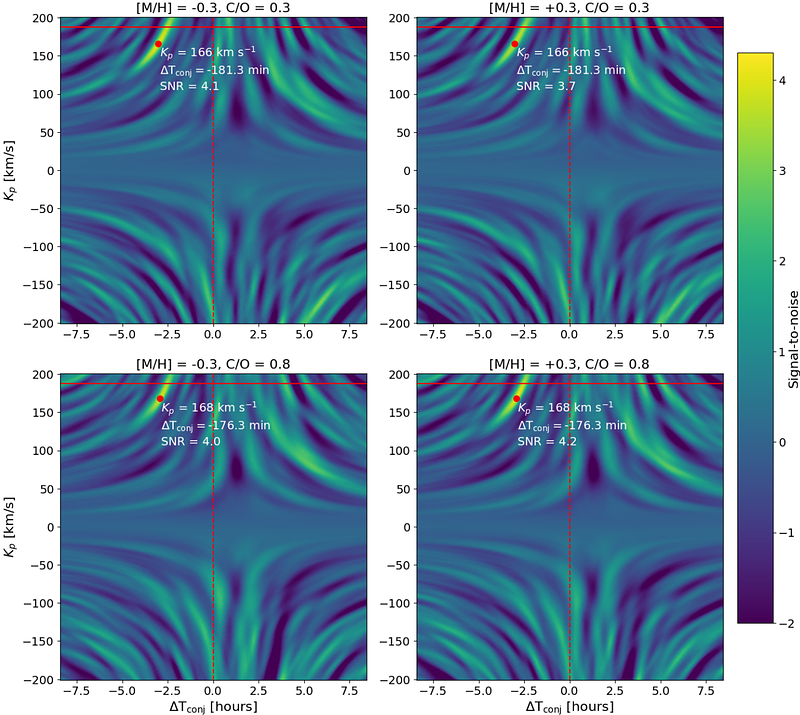True mass and atmospheric composition of the non-transiting hot Jupiter HD 143105 b

True mass and atmospheric composition of the non-transiting hot Jupiter HD 143105 b
Luke Finnerty, Yinzi Xin, Jerry W. Xuan, Julie Inglis, Michael P Fitzgerald, Shubh Agrawal, Ashley Baker, Geoffrey A. Blake, Benjamin Calvin, Sylvain Cetre, Jacques-Robert Delorme, Greg Doppman, Daniel Echeverri, Katelyn Horstman, Chih-Chun Hsu, Nemanja Jovanovic, Joshua Liberman, Ronald A. López, Emily C. Martin, Dimitri Mawet, Evan Morris, Jacklyn Pezzato-Rovner, Jean-Baptiste Ruffio, Ben Sappey, Tobias Schofield, Andrew Skemer, Taylor Venenciano, J. Kent Wallace, Nicole L. Wallack, Jason J. Wang, Ji Wang
AbstractWe present Keck/KPIC phase II $K$-band observations of the non-transiting hot Jupiter HD 143105 b. Using a cross-correlation approach, we make the first detection of the planetary atmosphere at $K_p = 185^{+11}_{-13}\rm km\ s^{-1}$ and an inferior conjunction time 2.5 hours before the previously-published ephemeris. The retrieved $K_p$ value, in combination with orbital period, mass of the host star, and lack of transit detection, gives an orbital inclination of $78^{\circ+2}_{-12}$ and a true planet mass of 1.23$\pm0.10\rm\ M_J$. While the equilibrium temperature of HD 143105 b is in the transition regime between non-inverted and inverted atmospheres, our analysis strongly prefers a non-inverted atmosphere. Retrieval analysis indicates the atmosphere of HD 143105 b is cloud-free to approximately 1 bar and dominated by H$_2$O absorption ($\log \rm H_2O_{MMR} = -3.9^{+0.8}_{-0.5}$), placing only an upper limit on the CO abundance ($\log \rm CO_{MMR} < -3.7$ at 95% confidence). We place no constraints on the abundances of Fe, Mg, or $^{13}$CO. From these abundances, we place an upper limit on the carbon-to-oxygen ratio for HD 143105 b, $\rm C/O < 0.2$ at 95% confidence, and find the atmospheric metallicity is approximately $0.1\times$ solar. The low metallicity may be responsible for the lack of a thermal inversion, which at the temperature of HD 143105 b would likely require significant opacity from TiO and/or VO. With these results, HD 143105 b joins the small number of non-transiting hot Jupiters with detected atmospheres.